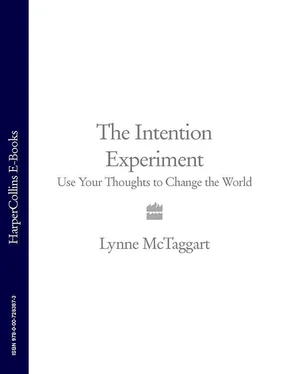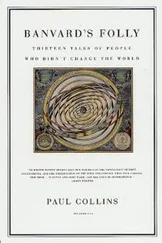As Schwartz mulled over the kind of equipment that would allow him to see very faint light, he thought of state-of-the-art supercooled charge-coupled device (CCD) cameras on telescopes. This exquisitely sensitive equipment, now used to photograph galaxies deep in space, picks up about 70 per cent of any light, no matter how faint. CCD devices were also used for night-vision equipment. If a CCD camera could pick up the light from the most distant of stars, it might also be able to pick up the faint light coming off living things. However, this kind of equipment can cost hundreds of thousands of dollars and usually had to be cooled to temperatures only 100 degrees above absolute zero, to eliminate any ambient radiation emitted at room temperature. Cooling the camera down also helped to improve its sensitivity to faint light. Where on earth was he going to get hold of this kind of high-tech equipment?
Kathy Creath, a professor of optical sciences at Schwartz’s university, who shared his fascination with living light and its possible role in healing, had an idea. As it happened, she knew that the department of radiology at the National Science Foundation (NSF) in Tucson owned a low-light CCD camera, which they used to measure the light emitted from laboratory rats after being injected with phosphorescent dyes. The Roper Scientific VersArray 1300 B low-noise, high-performance CCD camera was housed in a dark room inside a black box and above a Cryotiger cooling system, which cooled temperatures to –100°C. A computer screen displayed its images. It was just what they were looking for. After Creath approached the director of the NSF project, he generously agreed to allow the two of them access to the camera during its down time.
In their first test, Schwartz and Creath placed a geranium leaf on a black platform. They took fluorescent photographs after exposures of up to five hours. When the computer displayed the final photograph, it was dazzling: a perfect image of the leaf in light, like a shadow in reverse, but in incredible detail, each of its tiniest veins delineated. Surrounding the leaf were little white spots, like a sprinkling of fairy dust – evidence of high-energy cosmic rays. With his next exposure, Schwartz used a software filter to screen out the ambient radiation. The image of the leaf was now perfect.
As they studied this latest photograph on the screen of the computer in front of them, Schwartz and Creath understood that they were making history. It was the first time a scientist had been able to witness images of the light actually emanating from a living thing. 16
Now that he had equipment that captured and recorded light, Schwartz was finally able to test whether healing intention also generated light. Creath got hold of a number of healers, and asked them to place their hands on the platform underneath the camera for 10 minutes. Schwartz’s first crude images showed a rough glow of large pixilations, but they were too out of focus for him to analyse them. Next he tried placing the healers’ hands on a white background (which reflected light) rather than on a black background (which absorbed light). The images were breathtakingly clear: a stream of light flowed out of the healers’ dominant hands, almost as though it were flowing from their fingers. Schwartz now had his answer about the nature of conscious thought: healing intention creates waves of light – and, indeed, among the most organized light waves found in nature.
The theory of relativity was not Einstein’s only great insight. He had had another astonishing realization in 1924, after correspondence with an obscure Indian physicist, Satyendra Nath Bose, who had been pondering the then-new idea that light was composed of little vibrating packets called photons. Bose had worked out that, at certain points, photons should be treated as identical particles. At the time nobody believed him – nobody but Einstein, after Bose sent him his calculations.
Einstein liked Bose’s proofs and used his influence to get Bose’s theory published. Einstein also was inspired to explore whether, under certain conditions or certain temperatures, atoms in a gas, which ordinarily vibrated anarchically, might also begin to behave in synchrony, like Bose’s photons. Einstein set to work on his own formula to determine which conditions might create such a phenomenon. When he reviewed his figures, he thought he had made a mistake in his calculations. According to his results, at certain extraordinarily low temperatures, just a few kelvin above absolute zero, something really strange would begin to happen: the atoms, which ordinarily can operate at a number of different speeds, would slow down to identical energy levels. In this state, the atoms would lose their individuality and both look and behave like one giant atom. Nothing in his mathematical armamentarium could tell them apart. If this were true, he realized, he had stumbled upon an entirely new state of matter, with utterly different properties from anything known in the universe.
Einstein published his findings, 17and lent his name to the phenomenon, called a Bose–Einstein condensate, but he was never convinced that he had been right. Nor were other physicists, until more than 70 years later when, on 5 June 1995, Eric Cornell and Carl Wieman of JILA, a programme sponsored by the National Institute of Standards and Technology and the University of Colorado at Boulder, managed to cool a tiny batch of rubidium atoms down to 170 billionths of a degree above absolute zero. 18It had been quite a feat, requiring trapping the atoms in a web of laser light and then magnetic fields. At a certain point, a batch of some 2000 atoms – measuring about 20 microns, about one-fifth the thickness of a single piece of paper – began behaving differently from the cloud of atoms surrounding them, like one smeared-out single entity. Although the atoms were still part of a gas, they were behaving more like the atoms of a solid.
Four months later, Wolfgang Ketterle from Massachusetts Institute of Technology replicated their experiment, but with a form of sodium, for which he, as well as Cornell and Wieman, won the 2001 Nobel prize. 19Then a few years after that, Ketterle and others like him were able to reproduce the effect with molecules. 20
Scientists believed that a form of Einstein and Bose’s theory could account for some of the strange properties they had begun to observe in the subatomic world: superfluidity, when certain fluids can flow without losing energy, or even spontaneously work themselves out of their containers; or superconduction, a similar property of electrons in a circuit. In superfluid or superconductor states, liquid or electricity could theoretically flow at the same pace forever.
Ketterle had discovered another amazing property of atoms or molecules in this state. All the atoms were oscillating in perfect harmony, similar to photons in a laser, which behave like one giant photon, vibrating in perfect rhythm. This organization makes for an extraordinary efficiency of energy. Instead of sending a light about 3 metres, the laser emits a wave 300 million times that far.
Scientists were convinced that a Bose–Einstein condensate was a peculiar property of atoms and molecules slowing down so much that they are almost at rest, when exposed to temperatures only a fraction above the coldest temperatures in the universe. But then Fritz-Albert Popp and the scientists working with him made the astonishing discovery that a similar property existed in the weak light emanating from organisms. This was not supposed to happen in the boiling inner world of the living thing. What is more, the biophotons he measured from plants, animals and humans were highly coherent. They acted like a single super-powerful frequency, a phenomenon also referred to as ‘superradiance’.
The German biophysicist Herbert Fröhlich had first described a model in which this type of order could be present and play a central role in biological systems. His model showed that, with complex dynamic systems like human beings, the energy within created all sorts of subtle relationships, so that it is no longer discordant. 21Living energy is able to organize to one giant coherent state, with the highest form of quantum order known to nature. When subatomic particles are said to be ‘coherent’, or ‘ordered’, they become highly interlinked by bands of common electromagnetic fields, and resonate like a multitude of tuning forks all attuned to the same frequency. They stop behaving like anarchic individuals and begin operating like one well-rehearsed marching band.
Читать дальше











